Secrets of Their Success
Finance & Development, June 2013, Vol. 50, No. 2
Five women leaders share the stories of how they got ahead
Across the globe, few women make it to top executive positions. Even as universities in many parts of the world are turning out more female than male graduates, there is still a troubling gender gap among those in positions of power. According to a 2009 study by the Harvard Business Review, only 1.5 percent of the chief executive officers of the world’s top performing companies that year were women.
It’s all the more interesting, then, to take a closer look at the few who have managed to beat the odds. F&D spoke with five women leaders to see what they consider the crucial ingredients of their success.
Some credit their parents with instilling sound values in them and serving as their inspiration. Others cite diligence, intellectual curiosity, and a tendency to question conventional wisdom as traits that set them apart. And unlike most people, these women rarely let obstacles deter them from achieving their goals. On the contrary, as one pointed out, adversity can be a source of motivation and strength.
Here are their stories.
MARIA DAS GRAÇAS SILVA FOSTER
CEO of Petrobras, Brazil
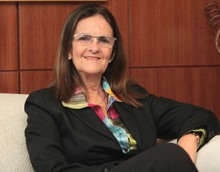
Looking out the window of her school bus on the way to high school, Maria das Graças Silva Foster gazed curiously at the Petrobras oil refinery and research center—one of many factories along an industrial corridor in Rio de Janeiro, Brazil—and felt the first spark of interest in a career in oil. After high school, she continued to pass the corridor on her way to engineering college, that initial seed having taken root in her choice of career.
She got her foot in the door at Petrobras by interning as an engineering student in that very research center, along the way earning degrees in chemical engineering and nuclear engineering as well as an MBA, all from Brazil’s leading universities. She has stayed on for some 33 years, becoming its first female chief executive officer in February 2012. Graça Foster is one of only nine female CEOs among the heads of Latin America’s top 500 companies.
Petrobras is an oil and energy giant. The company, Brazil’s largest, has been in existence for more than 58 years. It is expected to double its 2012 production of more than 2 million barrels of oil and gas a day to about 4.2 million in 2020. Graça Foster is certain that this leap in production will also help fuel growth in the Brazilian economy, and she sees her role as CEO as helping to shape the country’s development. Prior to serving as CEO, Graça Foster became the first female on Petrobras’s executive board when she was appointed director of its Gas and Energy Division in 2007, a significant achievement in a company that hired few women as engineers as late as the 1970s.
Graça Foster credits that high school dream as the inspiration for her success in a largely male-dominated world of oil and gas. The key to advancement, she believes, is “being well prepared, studying hard, and having the necessary knowledge and courage to take decisions.”
It’s also vital for executives to keep their fingers on the pulse of the organizations they lead. “Great leaders are men and women who understand their employees, and are strong and supportive,” she said. “Solidarity with peers—and a thorough knowledge of your company’s operations—are two very important ingredients for effective leadership.”
Reflecting on what advice she would give to other women who also have their eyes on the top prize, she observes that a leader “does not balk at difficulties, but uses them to build motivation and strength.”
Niccole Braynen-Kimani
BARBARA STOCKING
Former chief executive, Oxfam Great Britain
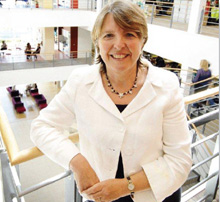
From her days as a teenager in Rugby, England, Barbara Stocking began asking the questions that would eventually lead her to a career in international development. It was there that she caught a first glimpse of societal distinctions and class structure. “The difference in resources between my state school and the private school made me think about inequality, and I began to ask why things were this way,” she says. Inspired by inequalities near and far from home—and also by parents who worked hard and gave back to the community—her eventual career path would reflect in roughly equal measure these influences from her formative years.
After studying natural sciences at Cambridge University in the 1970s, Stocking moved to the United States to work as a scientific researcher before getting a taste of international development work as part of a World Health Organization project in West Africa. In many ways, she saw the jump as a perfectly natural one, allowing her to apply her science and health knowledge directly in the developing world.
Back in the United Kingdom, she would eventually head up the international development and relief services agency, Oxfam—a post that she only very recently left after 12 years. Preparing her for the role as Oxfam’s chief executive were her various leadership roles in Britain’s National Health Service. “In many ways, my time with the health authority was very challenging—it seemed I needed to prove a woman could do the job as well as a man,” she recalls. “At Oxfam, I felt far more comfortable, where it wasn’t a surprise to have a woman in the role of chief executive—even if I was the first woman to hold the position.”
It was at Oxfam that people outside Britain began to take note of her accomplishments, as Stocking reestablished the organization as one of the leading water, sanitation, and public health agencies in humanitarian response, including being at the forefront on gender, environmental, and accountability issues.
Still, she recalls times when her own gender seemed to be an issue: “I was attending the World Economic Forum annual meeting in Davos one year, and someone introduced me as head of Oxfam to the CEO of a large company, but he looked right through me as though looking for a man.”
In July, she returns to Cambridge University as president of Murray Edwards College, one of two women’s colleges at Cambridge. Stocking herself is a product of the college, back when it was known as New Hall. “It’s such a privilege to take up the presidency of a college that puts a genuine emphasis on seeing women grow and develop to achieve their full potential and exceed even their own expectations.”
Glenn Gottselig
DAMBISA MOYO
Economist and author
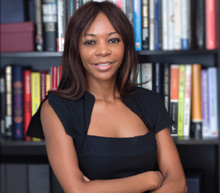
Zambian-born economist and author Dambisa Moyo is a bit of a star in the economics and business world. She has been recognized as one of the “top influential people” by TIME magazine, a “remarkable visionary” by Oprah Winfrey, and one of the “women who shake the world” by the Daily Beast.
Moyo is perhaps best known as an outspoken critic of international aid. In her 2009 bestselling book Dead Aid: Why Aid Is Not Working and How There Is a Better Way for Africa, she argues that Western aid efforts have done more harm than good, serving only to stifle development and perpetuate corruption. Since then, Moyo has published another two thought-provoking books—Winner Take All, about geopolitical shifts and developing trends in commodity market, and How the West Was Lost, which posits that the world’s most advanced economies are squandering their economic lead.
Moyo’s writings stir controversy in part because her credentials are as strong as her assertions. Born in 1969 in Lusaka, during one of the most turbulent times in Zambia’s history, Moyo came to the United States to study at Harvard University and American University. She went on to work at the World Bank for two years before moving to the United Kingdom to pursue a Ph.D. in economics at Oxford. She spent the following decade working at Goldman Sachs.
Moyo’s parents always placed a premium on education and, growing up, politics and economics were often debated at home, she says. As a result, she learned to question conventional wisdom at a young age.
What has been the driving force behind her many achievements? The acclaimed author credits her “insatiable curiosity about the world” as the prime reason for her successful career. “To my mind, the ability to learn, question, aspire, and improve oneself has been made significantly easier in a world where information is easily available,” she says. “I try to take advantage of the remarkable period in which we live.”
Moyo recognizes that a growing number of women like her are rising to key decision-making roles in government, business, and public policy, but she believes there is still a long way to go. “The representation of women at these levels remains woefully inadequate,” she says.
It is clear that some progress has been made, she said, but more can be done to prepare future generations of women to assume more influential positions in all spheres of life.
As for the person who most influenced her path in life, she points to Nelson Mandela. “His approach for arguing for universal suffrage in South Africa was to focus on logic and evidence, and not merely to rely on the moral and emotional case,” she says.
Lika Gueye
SUNGJOO KIM
Chief executive officer, Sungjoo Group
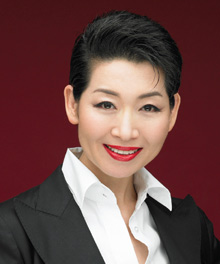
Sungjoo Kim is the founder, chief executive officer, and self-described “Chief Visionary Officer” of the Sungjoo Group, a prominent and popular fashion company in South Korea, which in 2012 boasted revenue of $396 million.
The youngest daughter of an energy tycoon, Kim could easily have married into another prominent Korean family and never worked a day in her life. Highly driven, however, she wanted to make her own way in the world.
After taking a degree in theology from Yonsei University in Seoul, Kim decided to attend Amherst College in Massachusetts despite strong opposition from her father, who wanted her to remain closer to home. Kim then pursued studies at the London School of Economics and at Harvard University, where she met her future husband, a British- Canadian.
Kim’s decision to marry the man of her choosing was the last straw for her father, and for a while the two were estranged. Through the help of an acquaintance, she landed her first job at Bloomingdale’s department store in Manhattan, working directly under the supervision of chairman Marvin Traub. There, she learned all she could about the fashion industry.
About five years later, Kim reconnected with her father, helping him out with negotiations he was leading in the United States. Having proved her business savvy, she convinced him to give her $300,000 to start the Sungjoo Group.
Her father’s investment has paid off. Since the early 1990s, Kim’s company has introduced a number of high-end Western brands to Asia by licensing such labels as Gucci, Yves Saint Laurent, and Marks & Spencer. Kim is now widely recognized as a business wizard in her own right, making Forbes Asia’s 2013 “Women in the Mix” list of the continent’s 50 most influential women in business.
But while Kim credits her father with giving her an “entrepreneur’s DNA,” she attributes her strength of character to her mother.
“The guiding light of my success is my mother,” Kim says. “She’s a woman who never fails to see the positive side. Even if a situation was very bleak, she always encouraged me to view it with gratitude and not to allow myself to become emotionally overwhelmed.”
During the Asian financial crisis in 1997, when her company was forced to shut stores, Kim says, the lessons learned from her mother helped her to take charge of the situation and overcome the problem.
Since becoming a successful businesswoman, and in a bid to promote the role of women in business, Kim set up the Sungjoo Foundation, a global leadership program focused on discovering and developing female talent.
“A woman from a devout Christian family, my mom held deeply rooted values of stewardship,” says Kim. “She dedicated herself to serving others, and that has worked as a strategy for me in my business.” The Sungjoo Foundation is part of that service ethos, she noted.
Kim observes that her mother’s use of her wealth and time to help others highlighted the difference between men’s and women’s contributions to the world. “Women have stronger emotional intelligence than men, and we tend to look at community first before pursuing our own success,” she says.
Yusun Lee
SOPHIE VANDEBROEK
Chief technology officer, Xerox Corporation
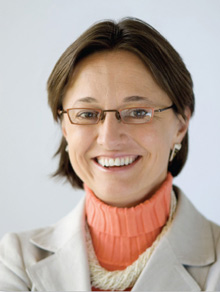
"I’ll never forget the day that Neil Armstrong set foot on the moon,” says Sophie Vandebroek. She recalls being transfixed before the television early that July morning in 1969, watching the historic event that sparked her interest in science. “At that moment, I had this dream: I wanted to see my footprints in moondust,” she says.
Fast-forward 44 years. Vandebroek never made it to the moon, but she has become the chief technology officer (CTO) of Xerox, one of the world’s iconic companies. The holder of 13 U.S. patents, she also serves as president of the Xerox Innovation Group, overseeing the company’s research centers in Europe, Asia, Canada, and the United States.
Born in Leuven, Belgium, to an engineer and an artist, Vandebroek was encouraged early on to aim high. After earning a master’s degree in electromechanical engineering from KU Leuven University in Belgium, she moved to the United States in 1986 to obtain a Ph.D. in electrical engineering from Cornell University.
But the path to the top has not been easy. Vandebroek joined Xerox in 1991, and five years later, her husband died suddenly, leaving her to raise their three small children. Abruptly, she was forced to adjust to her new status as a single parent and find ways to be as efficient as possible. “Delegate, simplify, and leverage IT” became Vandebroek’s mantra, according to a 2006 profile of her in Fast Company magazine.
Vandebroek persevered, earning the CTO title in 2006 just as Xerox was experiencing a turnaround. (The company turned a net income loss of $300 million in 2000 into a $1.1 billion profit in 2007, owing in part to an innovation revival.)
Vandebroek credits Xerox with creating a supportive environment for women.
“I’m lucky to be at a company where I don’t have to be a trailblazer,” she said at her 2011 induction into the Women in Technology International Hall of Fame, referring to the cluster of women in Xerox’s top management—most notably Ursula Burns, the chief executive officer.
But industry-wide, women leaders in science and technology are the exception, and Vandebroek would like to see that change. “One of my passions is to understand how we can attract more girls and minorities into these fields,” she says. She has a few ideas: if kids experienced early on how much fun science is, that would help; so would teaching engineering in middle and high school so younger students get a taste of what it’s all about.
“The number of jobs in the U.S. economy that require engineering and science degrees is growing, while the number of people—both U.S. citizens and immigrants—prepared to fill these jobs is shrinking,” Vandebroek says. “We should care deeply that the technology profession is so disproportionate by gender and that we’re not making kids—both boys and girls—sufficiently excited about science, technology, and math.”
Maureen Burke


